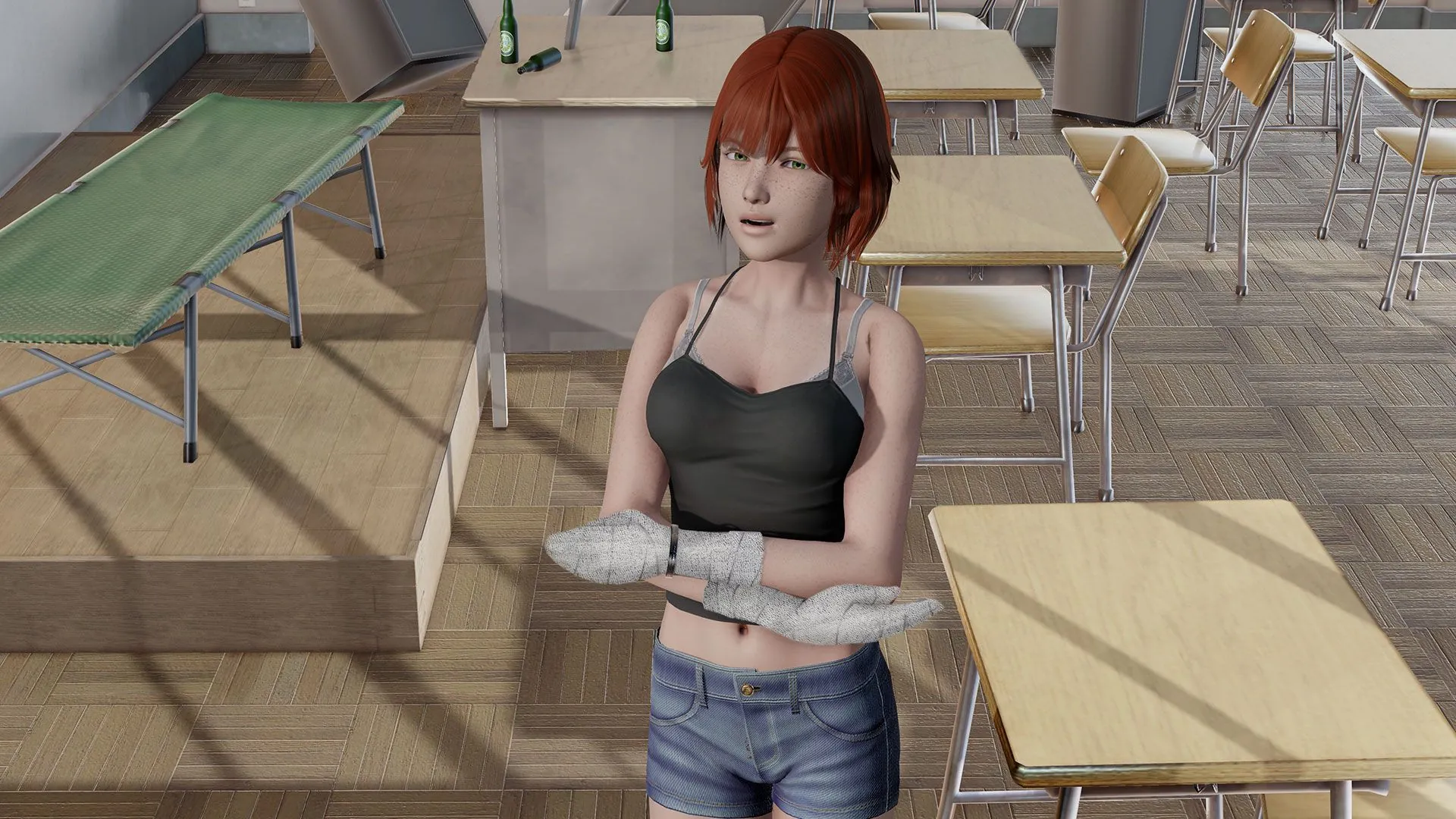Strangers on Paper
Play Strangers on Paper
Strangers on Paper review
Exploring the Story, Gameplay, and Unique Features of Strangers on Paper
Strangers on Paper is a captivating story-driven visual novel that invites players to reconnect with characters from the past through meaningful choices. Unlike typical adult visual novels, this game emphasizes narrative depth and character development, blending mature themes with a rich storytelling experience. Whether you’re new to visual novels or a seasoned player, Strangers on Paper offers a unique journey that balances emotional engagement with interactive gameplay.
What Makes Strangers on Paper Unique?
You know that feeling when you’re scrolling through a sea of visual novels, and they all start to blur together? 😴 Another high school romance, another supernatural mystery… it can get a little repetitive. That’s why playing Strangers on Paper felt like a breath of fresh air. It doesn’t just follow the formula; it rewrites it, focusing on a raw, grounded human story that sticks with you long after you’ve put the controller down. 🍃
This chapter is all about what sets this game apart. We’re diving deep into the mechanics, the heart, and the soul of an experience that truly understands the power of an interactive story visual novel.
### Narrative-Driven Gameplay and Meaningful Choices
At its core, Strangers on Paper gameplay is a masterclass in player agency. This isn’t about picking which cute character to date; it’s about navigating the complex, often messy, web of human connection. The visual novel story choices presented to you are rarely black and white. There are no obvious “good” or “bad” dialogue options. Instead, you’re making nuanced decisions that feel authentic to a real conversation—choosing when to be empathetic, when to be defensive, or when to simply listen.
I remember one early interaction where a character was venting about a personal failure. My instinct was to choose the option that said, “Don’t worry, you’ll do better next time!” It felt supportive. But the character’s reaction was a deflated, “You don’t get it.” I’d chosen platitudes over genuine understanding. The game subtly taught me that how choices affect story Strangers on Paper is about quality of interaction, not just steering the plot. It’s about how you talk to people, not just what you say.
This approach to storytelling is what makes the narrative so compelling. To see how it stacks up, let’s look at how its features compare to more traditional titles in the genre.
| Narrative Feature | Typical Visual Novel | Strangers on Paper |
|---|---|---|
| Choice Impact | Often leads to predetermined routes (e.g., Character A, B, or C route) | Choices subtly alter relationship dynamics and story beats within a unified narrative |
| Dialogue Options | Frequently obvious moral or romantic alignments | Nuanced, realistic responses that prioritize emotional authenticity |
| Story Branching | Major branching paths that significantly diverge | Subtle, woven branching that affects character perspectives and scenes |
| Player Role | Often a self-insert protagonist | You are a defined character with your own history, influencing how others perceive your choices |
### Character Relationships and Emotional Depth
If the narrative is the skeleton of Strangers on Paper, then the characters are its beating heart. The character development in Strangers on Paper is some of the most nuanced I’ve ever experienced. These aren’t archetypes; they are beautifully flawed, fully realized people with their own fears, histories, and motivations. You don’t just learn about them through exposition dumps; you discover who they are through every hesitant confession, every defensive remark, and every shared moment of vulnerability.
The game excels at creating an emotional narrative visual novel by making you care deeply about these connections. A prime example of a key choice involves two core characters, let’s call them Alex and Sam. Early on, Alex confides in you about a past conflict with Sam.
- The Choice: You can either immediately take Alex’s side, suggest that Sam might have had their reasons, or propose you all talk it out together.
- The Immediate Impact: Choosing to side with Alex strengthens your bond with them but makes Sam slightly more guarded around you. Suggesting Sam might have reasons does the opposite, intriguing Sam but making Alex feel a bit dismissed.
- The Long-Term Impact: This single choice doesn’t lock you out of content, but it sets a tone. Later, when a major conflict erupts between them, the game remembers your initial stance. If you had previously advocated for communication, that option is now more available and effective. If you took sides, the rift is harder to mend. It’s a brilliant system where your past actions directly inform your present options.
This level of detail in the character development in Strangers on Paper ensures that no two playthroughs feel exactly the same. Your relationships are uniquely yours, built one delicate choice at a time. 💞
### Visual and Audio Design Enhancing Immersion
You can’t talk about the unique atmosphere of this game without praising its technical artistry. The Strangers on Paper graphics and sound are not mere decorations; they are active, essential components of the storytelling engine.
Visually, the game employs a soft, almost painterly style. The backgrounds are incredibly detailed, making every location—from a cluttered, cozy apartment to a quiet, rain-drenched park bench—feel lived-in and real. 🎨 Character sprites are expressive, with subtle shifts in posture and fleeting micro-expressions that tell you more than any line of dialogue could. I often found myself pausing just to take in a scene, reading the emotions in a character’s eyes or the way they fidgeted with their hands when nervous.
But the real star of the show might be the audio. The soundtrack is a minimalist masterpiece, knowing exactly when to swell with a poignant melody and when to retreat into near-silence, leaving only the ambient sounds of the world. The careful use of sound effects—the distant sound of traffic, the chirping of crickets at night, the muffled chatter in a cafe—builds a powerful sense of place. It’s this impeccable audio-visual synergy that completes the immersion, pulling you completely into its emotional narrative visual novel world. 🎧
The Strangers on Paper gameplay loop becomes hypnotic because of this. Making those tough visual novel story choices feels weightier when the room is dimly lit on screen and a somber piano piece begins to play. You aren’t just selecting text; you are living a moment.
Ultimately, Strangers on Paper stands as a testament to what the genre can achieve. It forges a powerful interactive story visual novel experience by trusting its audience with complexity, treating its characters with respect, and weaving every element—choice, character, sight, and sound—into a cohesive and profoundly moving whole. It’s a game that doesn’t just want to tell you a story; it wants you to feel it. And in that, it succeeds spectacularly. ✨
Strangers on Paper offers a refreshing take on the visual novel genre by prioritizing story and character over conventional adult content. Its meaningful choices and emotional depth create a memorable experience that resonates with players long after the game ends. If you’re looking for a visual novel that combines heartfelt storytelling with engaging gameplay, Strangers on Paper is a must-try. Dive in and discover the unique journey waiting for you.












